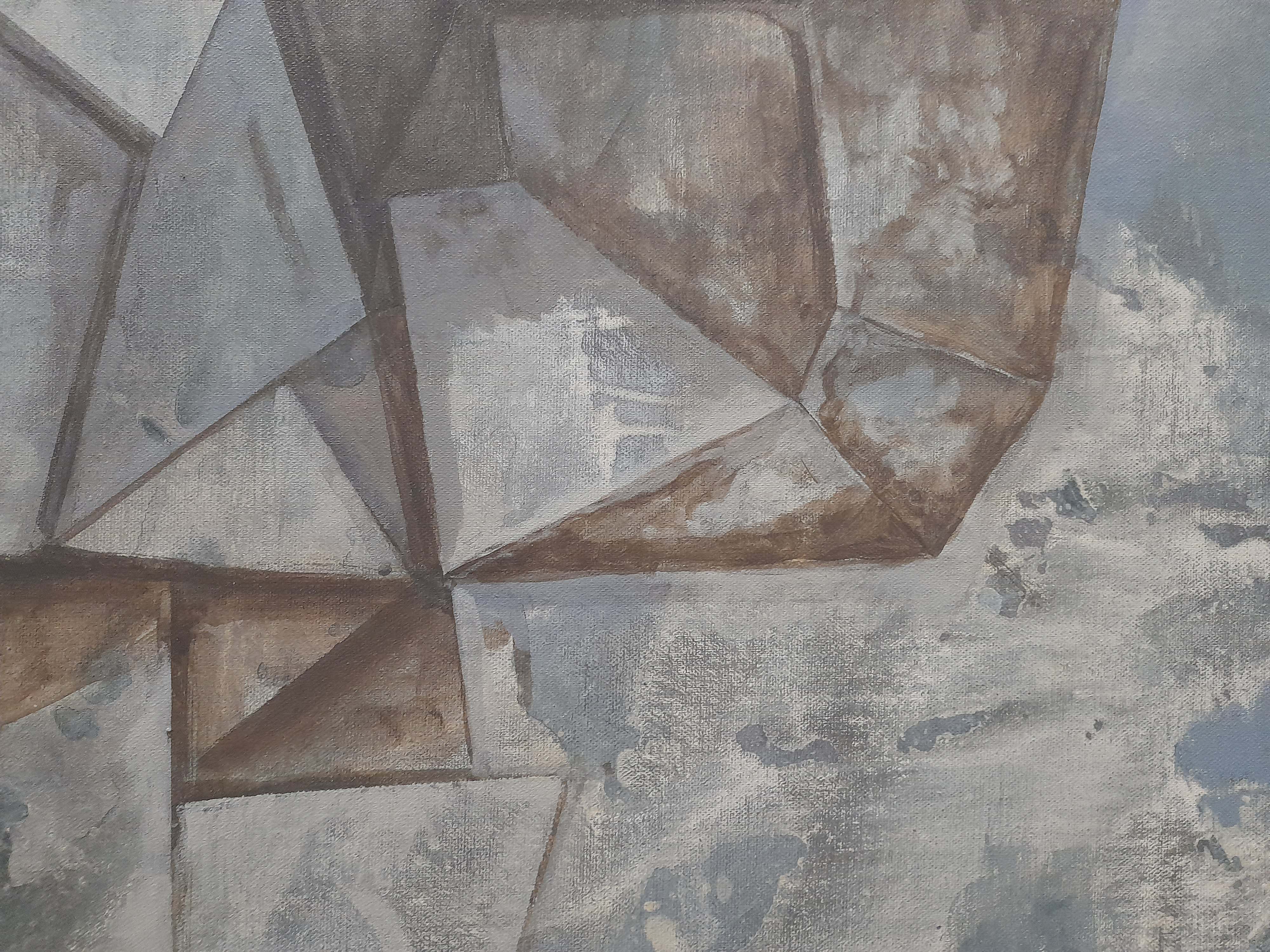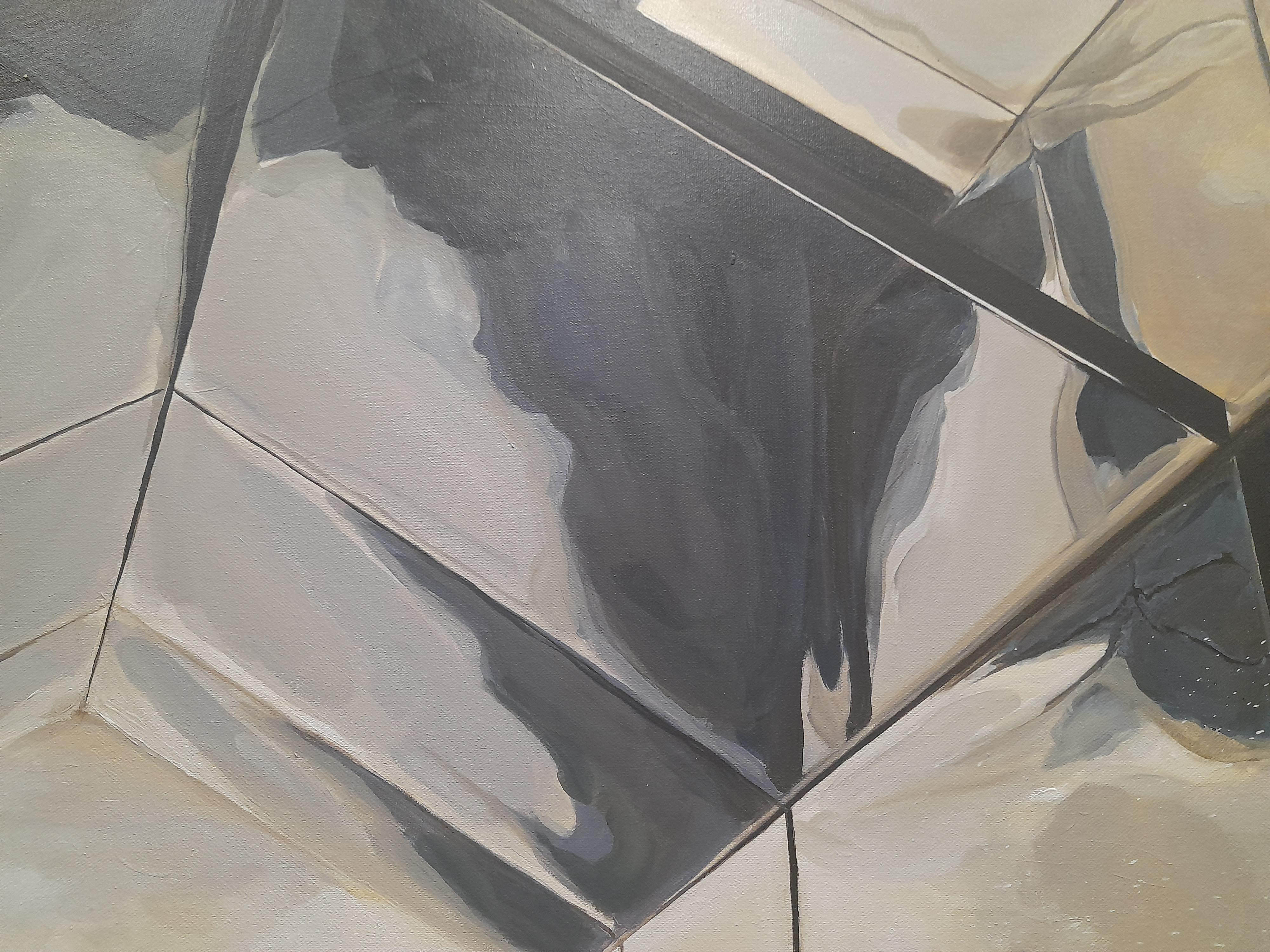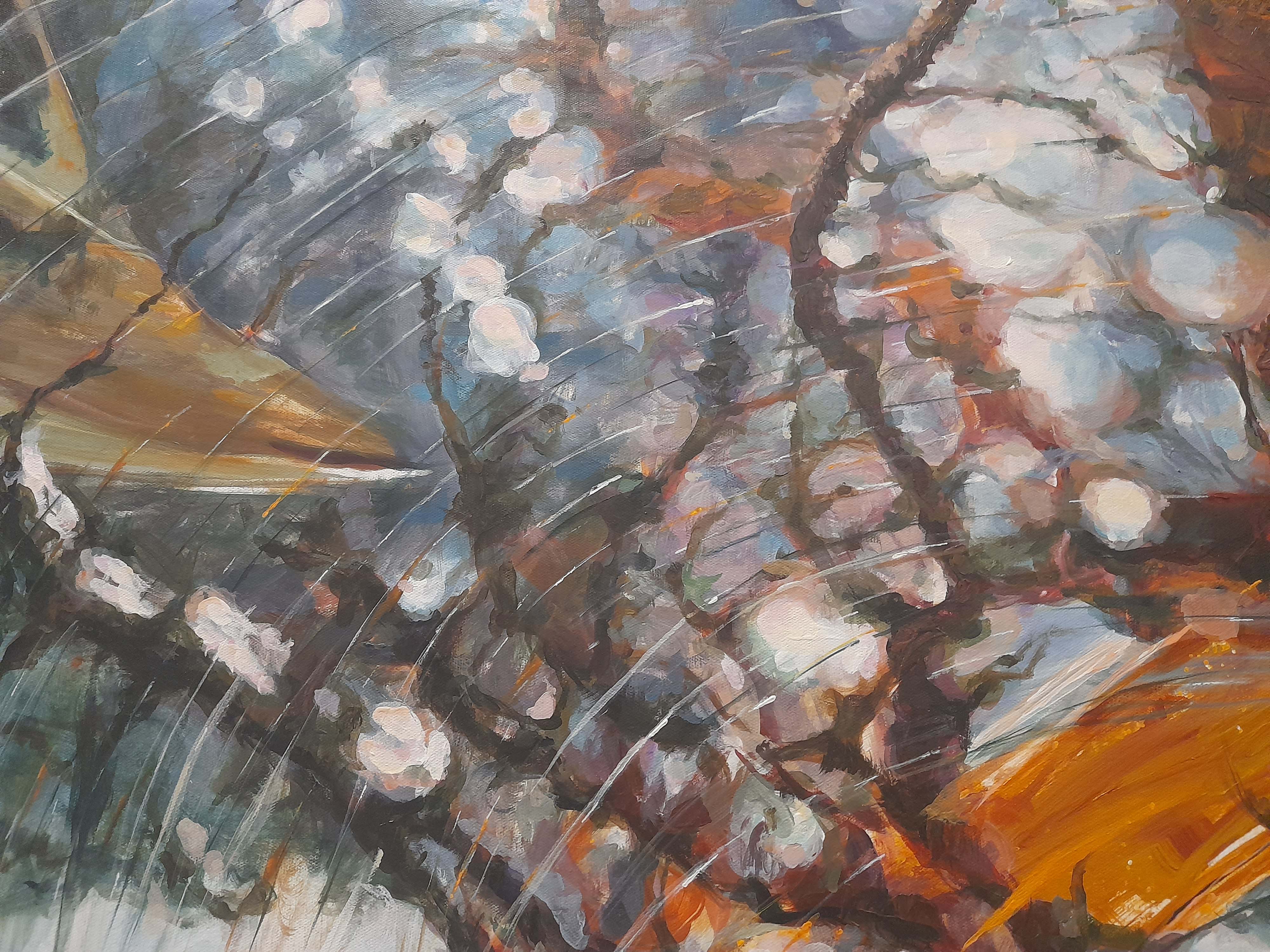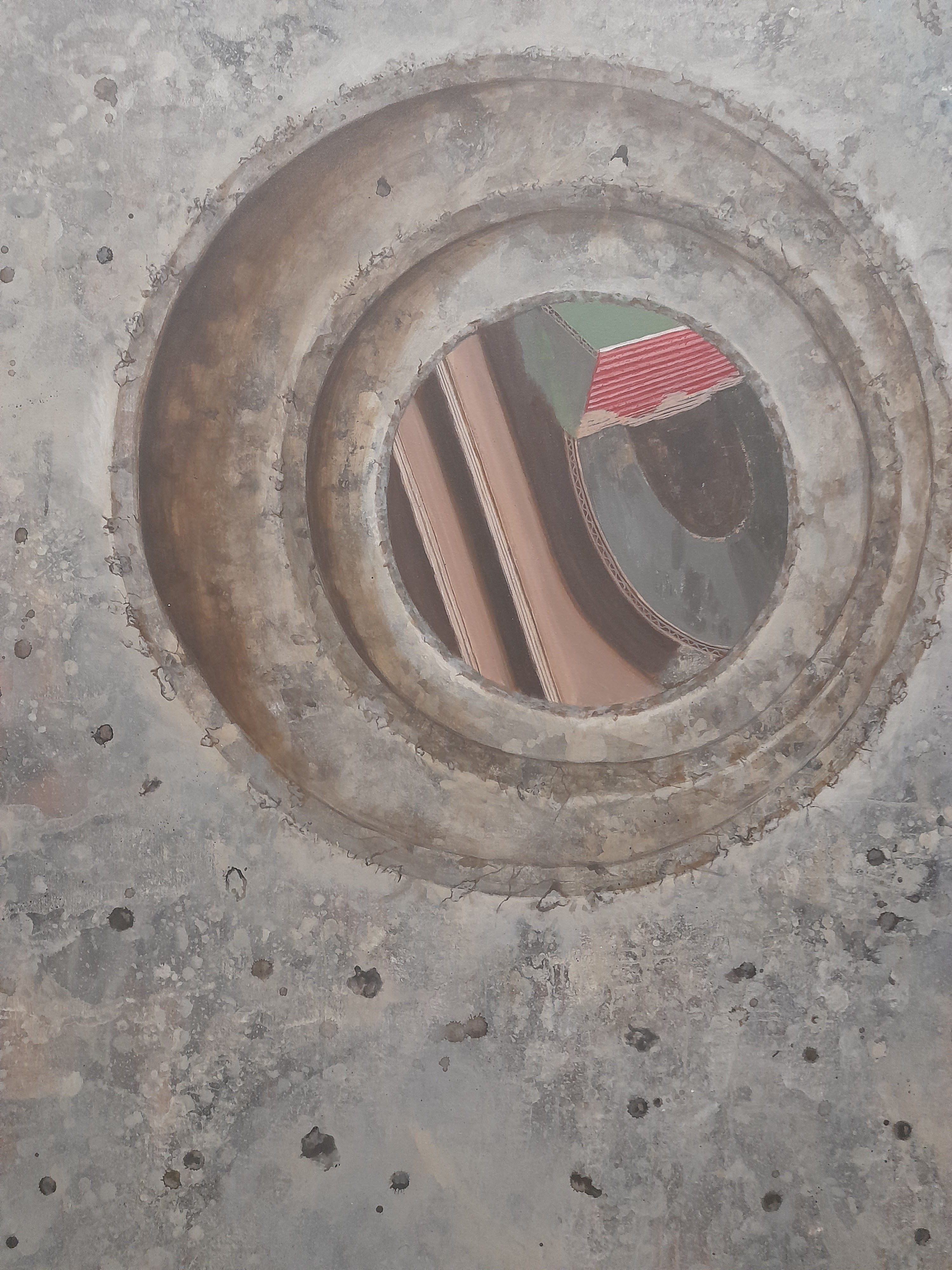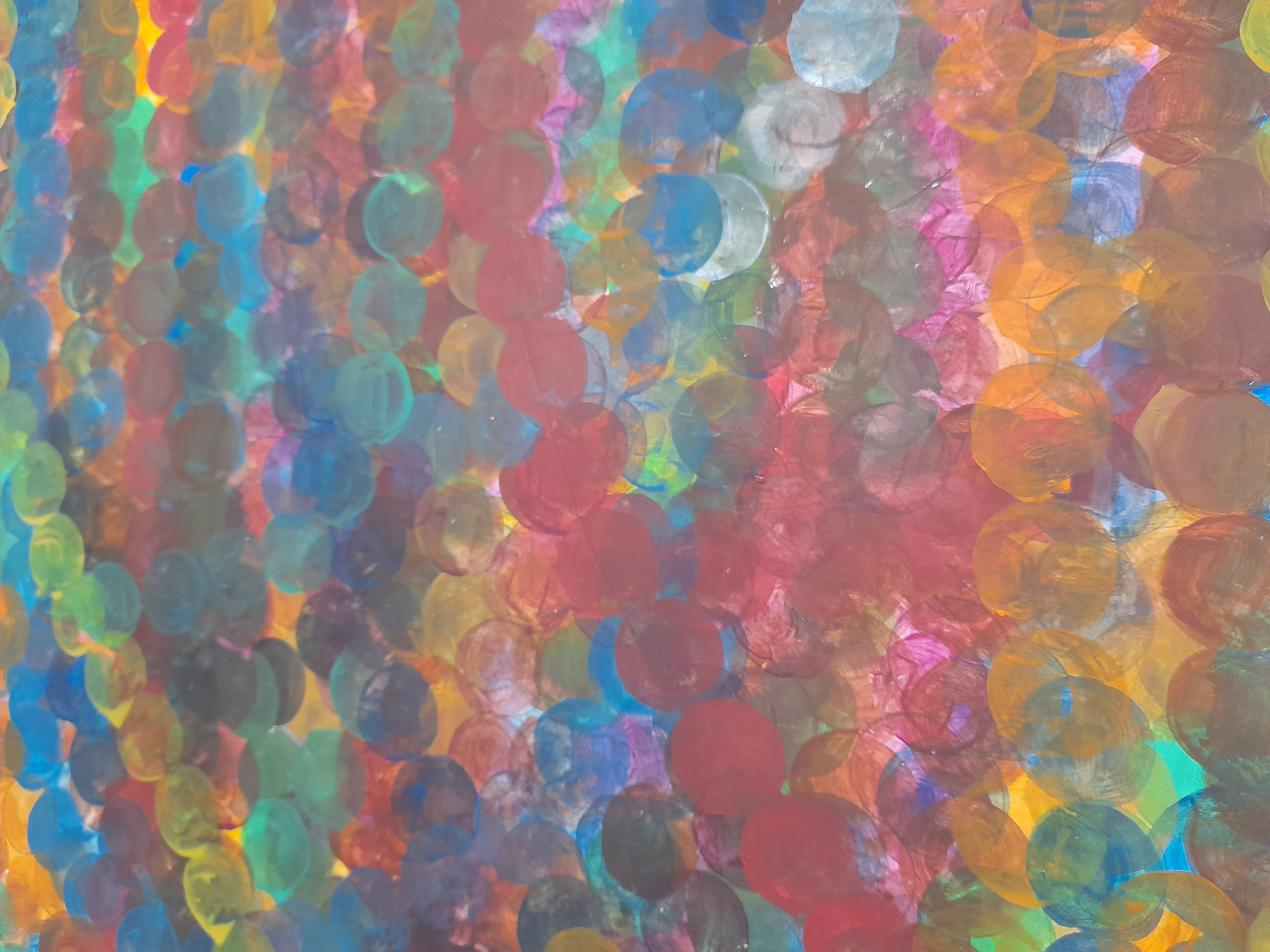We can often get lost in the ineffable landscape of abstract visual language. It twists, pulsates, unravels, and reshapes itself into the abundance of iterations across different artists’ works. One might chalk this up to a universal intuition that within such outlets of expression—as uniquely honed as they may be—is a shared network of experiences.
It remains the keen ability of the artist to condense this vast spectrum of stories into pools of color, form, and oftentimes enigmatic imagery. Imagery that, in the nebulous aftermath of creation, nurtures inklings of a rebirth.
Through the work of such artists, a resonance is formed, allowing them to draw from the firmament of human narratives. Tapping into such a web are three artists whose works are on display at Drawing Room Manila: Amy Aragon, Jay Ticar and Maria Cruz recall the visual traces of creation, loss, industry, and memory through echoed conceptual and visual sensibilities in their paintings. Within floating spheres, Cruz finds imprints of loss; Aragon sees ripples of energy; while Ticar suggests a reframing of ubiquity. In their works is both a plurality of interpretation and parallel threads of understanding.
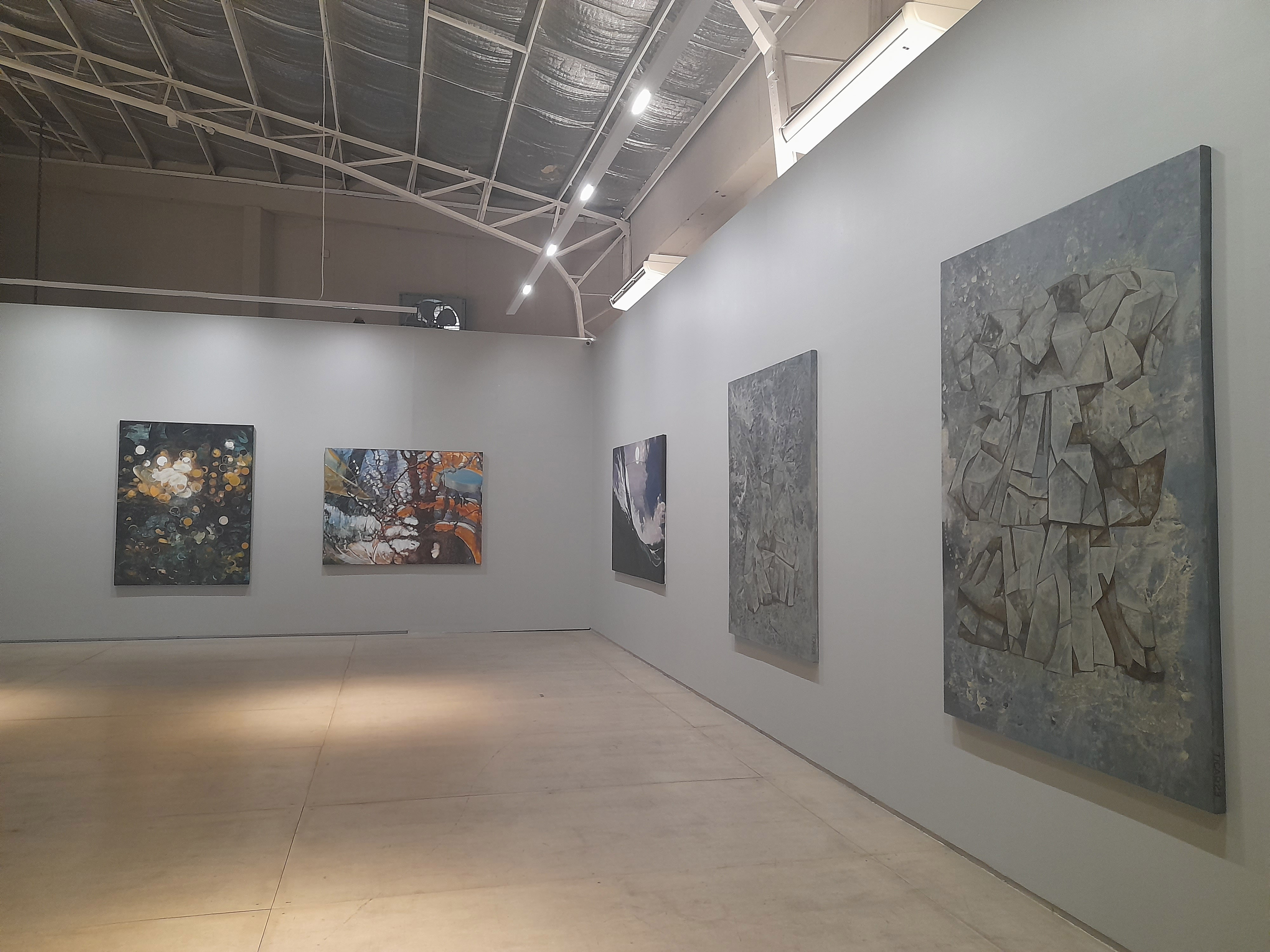
The Expanding Cluster of Particles and the Birth of New Planets presents the works of Aragon and Ticar as they contemplate the idea of a blank slate. The exhibit text talks of, “debris, or dust as specs of ideas and memories being gathered to create new entities and systems.” The artist duo reflects on the idea of the Big Bang—though not on the loud instance of creation, but on the “nebular formations” left behind and what new perspectives are brought to light.
With such an intriguingly descriptive title, one might be prompted to see each work through its lens. Aragon’s paintings depict scenes of an otherworldly vibrancy. Her works appear to reverberate with a cosmic energy, felt across vistas that appear calmingly natural and yet transcendent of familiar visual planes. As she distorts the recognizable, Aragon imbues each scene with a procreative energy, as if such ideas were gradually coalescing to form new worlds. From the glaring energy of Golden Hour, to the quieter mystique of Tale of Silver Linings, what was nebulous becomes both clearer and more obscure at the same time.
The essence of “clusters” and “planets” feels less palpable in the muted works of Ticar. His gray paintings depict architectural forms evoking industry and construction. Steel gratings, masses of concrete, stone-like textures—all signifiers that may cause one to wonder, through what lens do we envision creation? Is the ethereal and cosmic so far removed from the material, or can we find this colossal energy within the sacred construction of our own perceptible spaces? In Aligning Portals, we peer through a hole resembling a concentric celestial sphere. At its core is a sight not immediately recognizable yet also so discernibly commonplace, it could have been visible through our very own walls. Ticar explores the material and tangible essence of his configurations as if they marked the evolution of new bodies of sorts—expansive aggregations, or, more familiarly, the backbones of what may be considered home.
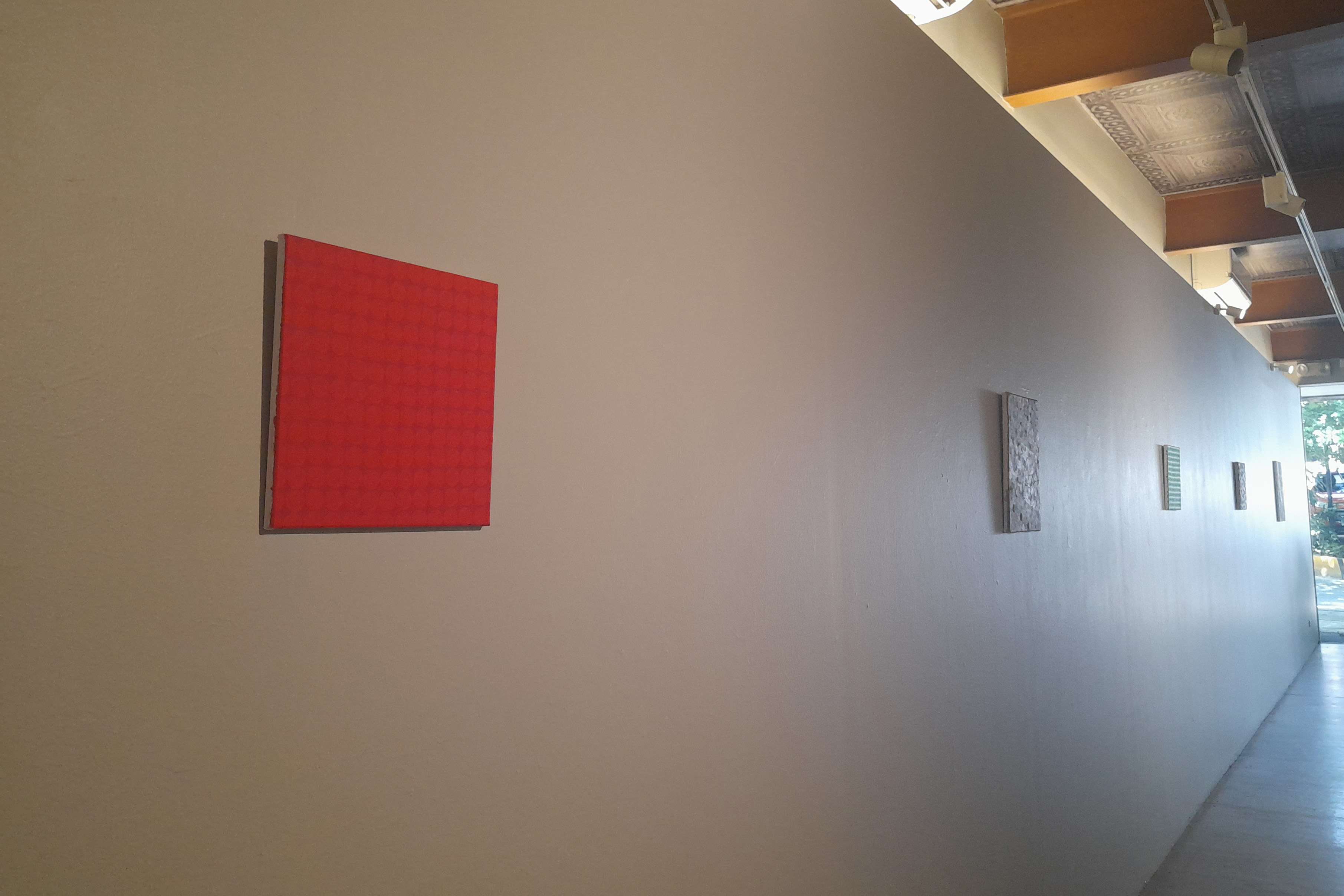
Whereas Aragon and Ticar envisage a beginning, Cruz observes the remnants of an ending. In Memory of Those Lost Paintings That Disappeared With Unrecognized View Of Life is a tribute to works the artist had lost while on transit to Melbourne last year. The show is tinged with a sense of melancholy as she mourns not only the works themselves, but the narratives they held. Although one might look at each vibrant, small canvas and not feel an immediate sense of loss, in recontextualizing each work as vestiges of what once was, one suddenly finds alienation within the many circular marks and bright hues, now “unrecognized” as they may be. As detailed as they appear, works like Fourteen Seventy Three (1473) and Six Hundred Fifty Four take on a vacant character. Yet one could also view Cruz’s works as a reimagining, visualizing new lives where previously they had been cut short. The repetitive nature of her marks may be seen as both an act of tribute and propagation, their possibilities growing in multitude.
Both shows are a testament to the evocative power of visual mark-making. Drawing from an all-encompassing reservoir of painterly affects, Ticar, Aragon, and Cruz surpass the boundaries of their individual practices. Such is the simple yet endlessly generative power of the artist: to use pervasive visual impressions to evoke a universe of human experiences. Like in Cruz’s works, they assure that this cycle of rebirth is immutable, and ideas and their visual manifestations are constantly in flux. In the aftermath of this creative genesis, artist and viewer alike are enveloped in cryptic tapestries of shapes, colors, and the inscrutable, yet altogether intimately familiar.
The Expanding Cluster of Particles and the Birth of New Planets and In Memory of Those Lost Paintings That Disappeared With Unrecognized View Of Life run until March 11, 2023, at The Drawing Room Manila.
Mara Fabella is an artist, writer, and occasional fitness junkie. Tap the button below if you'd like to buy her a coffee.

